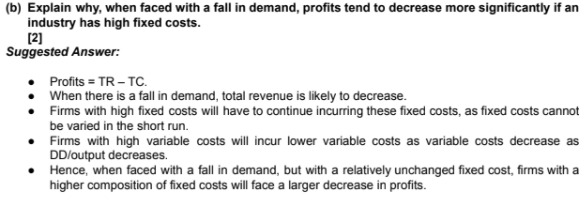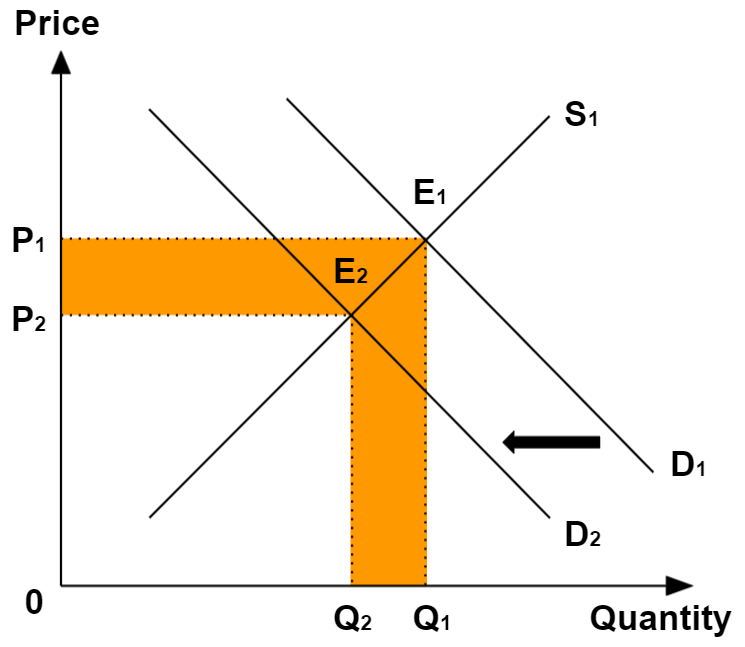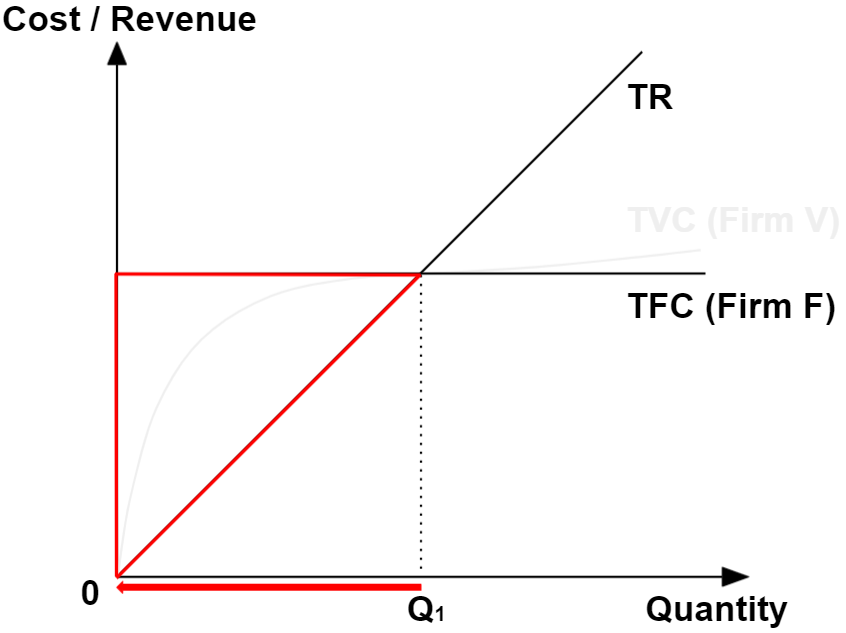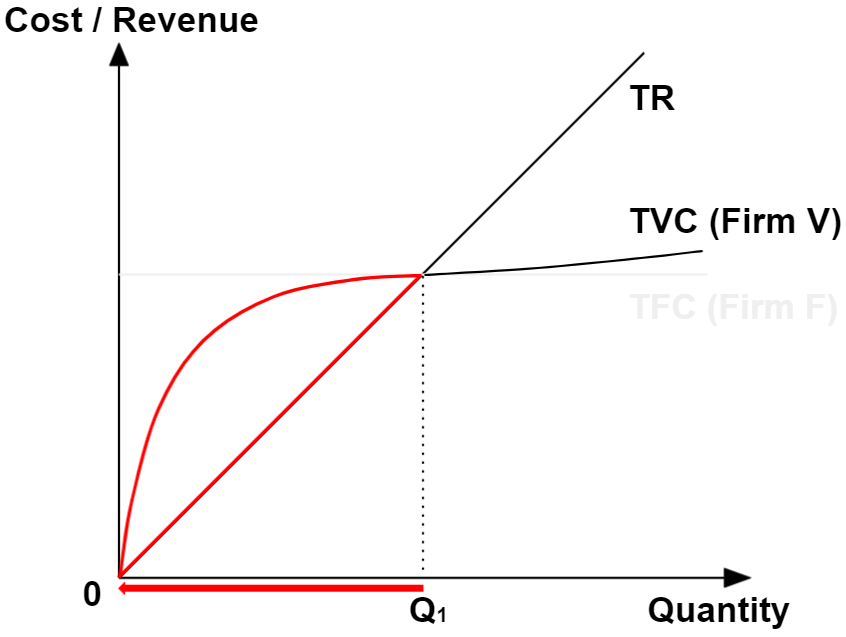
Question: Explain why, when faced with a fall in demand, profits tend to decrease more significantly if an industry has high fixed costs.
Hi, I have read the suggested answer, but I do not fully understand why. Can you explain a little more about it please? Thank you!
Well, first, we have to lay some key definitions out:
- Total Fixed Costs (TFC) are costs that do not vary with output;
- Total Variable Costs (TVC) are costs that vary (positively) with output;
- Total Profit (TP) = Total Revenue (TR) – Total Cost (TC); where
- TC = TFC + TVC
For more detailed explanations, please read them in my notes here.
With a fall in demand, and given a typical supply curve as illustrated below, TR must fall, alongside output:

Next, we note, with reference to the defintions above, that with falling output:
- TFC remains unchanged; but
- TVC falls.
To see the respective impacts to total profits (TP), we can utilise two extreme examples:
- Firm F whose costs are entirely fixed; and
- Firm V whose costs are entirely variable.
Firm F’s TP = TR – TFC
As demand falls:
- TR falls; and
- TFC remains unchanged.
To put another way: △TP = △TR
Firm V’s TP = TR – TVC
As demand falls:
- TR falls; and
- TVC falls.
To put another way also: △TP = △TR – △TVC
Since TVC and TR are both positively related to output, then TVC and TR must be positively related as well (by transitive relation).
As a result when output falls, △TVC negates the fall in TP caused by △TR, causing the fall in TP to be reduced, as opposed to the case of Firm F.
Therefore we can conclude that a firm whose cost structure leans more to the traits of Firm F, rather than Firm V will likely see profits decline faster, than if the firm’s cost structure leans more to the traits of Firm V rather.
Graphical Representation
For the benefit of those who are more visual creatures, we can illustrate why.
For the sake of convenience, the illustrations will show the total loss incurred for the following:
- The firm’s initial output level earns normal profit; and
- The firm reduces output to just above 0 (because Firm V’s TVC = $0 if output = 0).
Firm F’s total loss will then be illustrated by the area in red:

On the other hand, we can see that Firm V’s total loss is indeed smaller:

In case you are wondering why the shape of TVC – it has to do with the Law of Diminishing Marginal Returns, which is assumed to hold true in general.
If you need further clarifications, leave your queries in the Comment section below!

I am always invstigating online for posts that can help me. Thank you!
LikeLike
Best blog to read, very useful. Please check my bio.
LikeLike